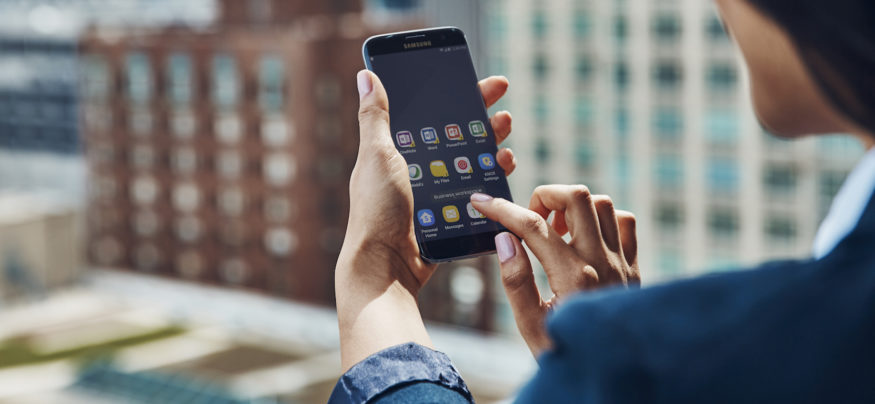With more than half of all government employees working outside of an office on a regular basis, the need for them to have mobile access to workplace applications, services and data is critical. Frost & Sullivan recently surveyed almost 200 IT decision makers who operate in the government sector to get a better understanding of where they are today with their mobility deployments — and where they expect their mobile access to be in the next year or two. The results are centered around three types of devices: smartphones, tablets and wearables.
Smartphones are by far the most popular mobile endpoints in both local and national government organizations today. More than 35 percent of respondents report that between 75 and 100 percent of their employees use smartphones for work; in about 20 percent of organizations, between 50 and 75 percent of employees use the tools, and 25 to 50 percent of employees do so in almost 25 percent of government entities. A full 45 percent of government organizations provide smartphones to some or all of their employees who use them; the other 55 percent allow employees to use their own devices for work purposes.
Tablets are catching up to smartphones and are expected to be commonly deployed in the years to come. Today, more than one-third of IT decision makers say that up to 25 percent of employees use the devices for business purposes, and another 30 percent say they’re used by as many as 50 percent of their employee base. In another 25 percent of organizations, tablets are used for work by anywhere from 51 to 100 percent of employees on a routine basis. In more than half of all government organizations, the agency pays for tablets for employees who need them. And when it comes to network connectivity, a little less than a third of organizations run the devices on Wi-Fi only.
Wearable devices such as smartwatches, eyeglasses and other types of sensors are used by as many as 50 percent of employees in almost half of all government organizations. In 5 percent of agencies, they’re used by as many as 100 percent of employees to get their work done more efficiently and effectively.
On average, respondents report that they spend about 14 percent of their IT budget on mobile devices and related services and workplace applications. The majority of government organizations have policies in place to govern the “bring your own technology” (BYOT) trend; 44 percent of them tell us they expect the amount of BYOT use to stay the same in the next two years, and almost a third expect it to increase, in some cases dramatically. Interestingly, BYOT is more likely to decrease at the federal or national level, as more of these larger agencies move to purchase, deploy and support mobile devices, apps and services for their employees.
Samsung’s line of enterprise-ready smartphones offer the security and productivity tools employees need to work from anywhere.







